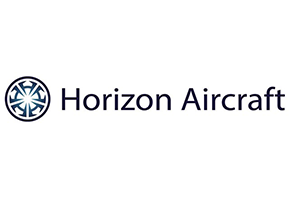Pono Capital Three (PTHR) to Combine with Horizon Aircraft in $216M Deal
Pono Three (NASDAQ:PTHR) has entered into a definitive agreement to combine with eVTOL aircraft developer Horizon Aircraft at an equity value of $216 million.
Toronto-based Horizon has developed a hybrid eVTOL design that involves lifting the craft vertically with rotors inside its wings and forward with a larger propeller at its rear.
The combined company is expected to trade on the Nasdaq once the deal is completed in the fourth quarter of 2023 or first quarter of 2024.
Transaction Overview
Pono Three has about $120 million in is current trust and has managed to avoid any redemptions to date. It has until February 14, 2024 to complete a combination under its initial deadline, but it may extend this automatically up to six months in exchange for contributions of $0.033 per share to its trust.
The SPAC plans to supplement this with a forward purchase agreement (FPA) with Meteora Capital Partners. It has not yet revealed the size or terms of this proposed agreement, but many of the last several SPAC FPAs announced have been capped at the investor purchasing up to 9.9% of the public SPAC shares with the option to waive this restriction.
The parties have not yet filed their merger documents or an investor presentation, but Pono Three’s profile page will be updated once more information is made available.
Quick Takes: Horizon joins a flock of eVTOL companies that have looked to SPACs to facilitate the next stage in their development, but it is not without its own distinguishing plumage.
Unlike eVTOL de-SPAC predecessors Joby (NYSE:JOBY), Archer (NYSE:ACHR), Lilium (NASDAQ:LILM), as well as 2019 traditional IPO peer EHang (NASDAQ:EH), Horizon’s plane designs are not purely electric.
This cuts both ways, as it may not be perceived of as green with at least some fuel being expended during its flights. But, what it loses in sustainability street cred, it gains in terms of speed, range and lift capacity.

Estimated to reach top speeds of 450 km/h, Horizon’s Cavorite X5 is 40% to 350% faster than these competitors’ designs and its 500 km range is more than double its next peer. This is still significantly slower than conventional commercial aircraft which cruise at about 900 mph, but much faster than helicopters that on average top out at about 260 km/h.
Less reliance on batteries for power also provides some more functionality on board.
The Cavorite X5’s batteries weigh about 200 kg, while Joby and Archer’s builds carry three times that battery weight and therefore have less cargo capacity. Joby’s S4 is expected to be able to functionally carry 400 kg, the Archer Maker 450 kg, while Liliam and EHang’s smaller designs have onboard capacity of just 350 kg to 100 kg.
Considering these vehicles are primarily designed to transport people, these are not small distinctions. The average North American weighs 80.7 kg, not counting clothing and luggage.

These companies will probably continue to face some design challenges in maximizing their designs to carry four-to-five passengers plus a pilot and some creature comforts. The Cavorite X5’s 500 kg-capacity gives it a bit more wiggle room, especially if it plans to have broader uses as an air ambulance, provide medical evacuations and move other valuable cargo.
Pono Three CEO Davin Kazama also suggested in the parties’ press release that having a hybrid engine that can be powered either by electricity or jet fuel would simply the certification process. Having a backup for the battery while in the air certainly seems like a comforting feature while this technology is still at its early stages.
The hybrid design, which has long been used in land-bound craft, also allows the planes to recharge their batteries while in flight as the fuel motor is in operation. Once back on the ground, the plane could theoretically be much more quickly refueled for additional missions by topping off its gas tank while their pure electric counterparts would need a longer for a full charge.
Still, with “zero emissions” becoming the new standard for sustainable options, Horizon may see itself disfavored over time as its pure electric peers gradually improve the capabilities of their designs.
For now, some of these product distinctions remain somewhat theoretical. The eVTOL-makers mentioned above plus additional de-SPACs EVe Air Mobility (NYSE:EVEX) and Vertical Aerospace (NYSE:EVTL) are still in the process of gaining regulatory approval for their designs – although some are closer than others and it appears the FAA has landed on a clearer path for eVTOLs to get to the other end.
As with ground-based EV companies targeted by SPACs, the other big question for any company in this space is whether each will have enough cash on hand to get it through the capital-intensive development process on through regulatory approval and mass production.
Many of the eVTOL companies targeted by SPACs in the past had strong strategic relationships in place with airlines, aircraft manufacturers and other key partners investing directly into the eVTOL developers. Horizon has announced no such major development for itself, but noted that it expects the proceeds from this deal to get it where it needs to in further developing its latest model – the Cavorite X7.
ADVISORS
- Company
- Dorsey & Whitney LLP is serving as U.S. legal counsel.
- Gowling WLG (Canada) LLP is serving as Canadian legal counsel.
- SPAC
- Nelson Mullins Riley & Scarborough LLP is serving as U.S. legal counsel.
- Fang and Associates is serving as Canadian legal counsel.

